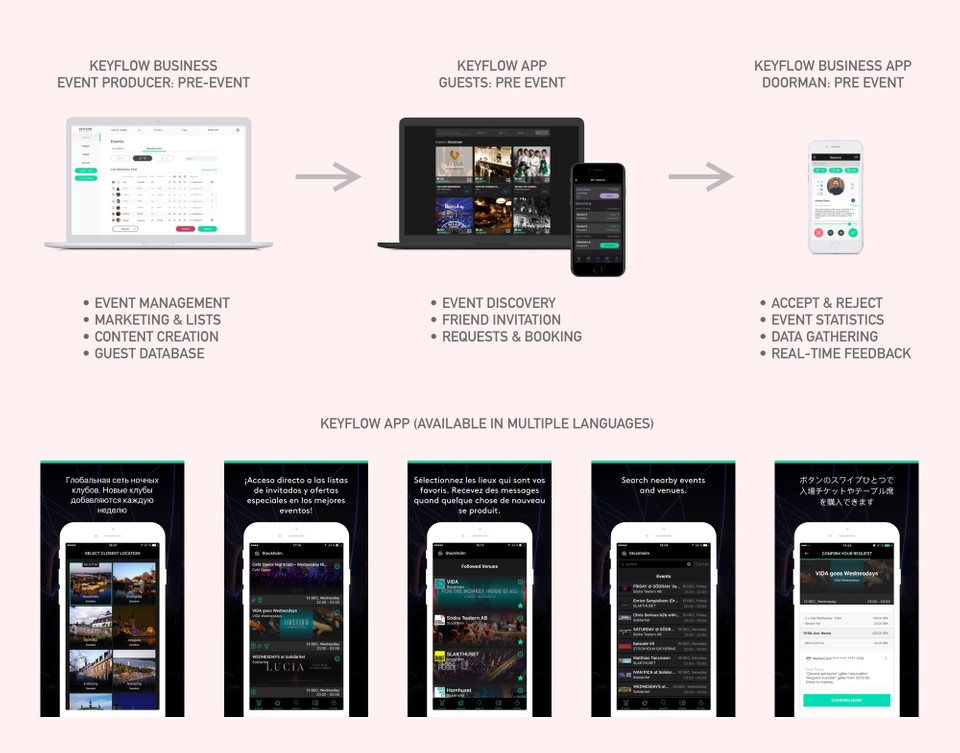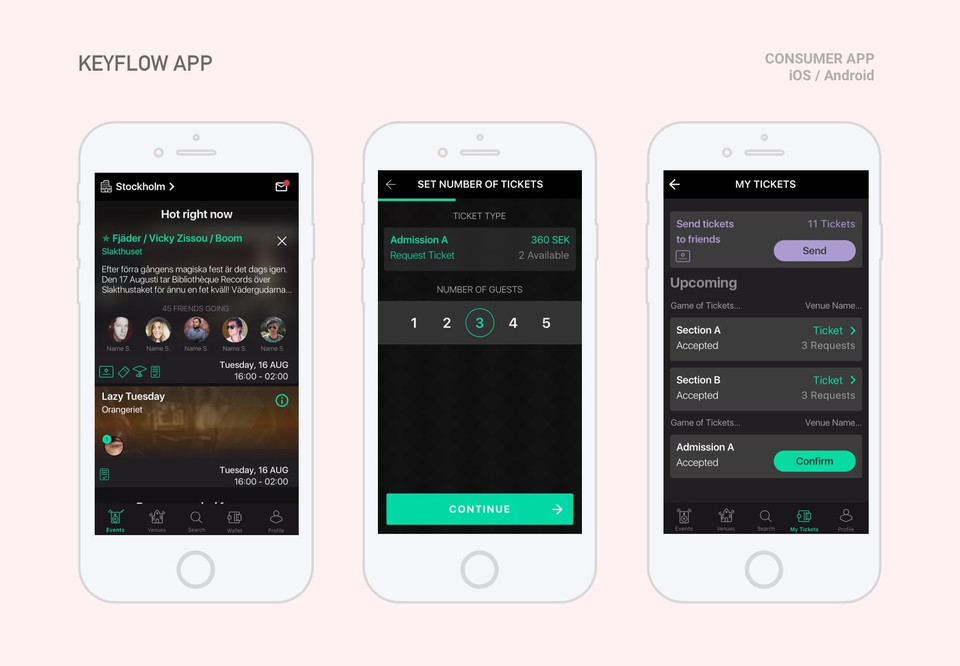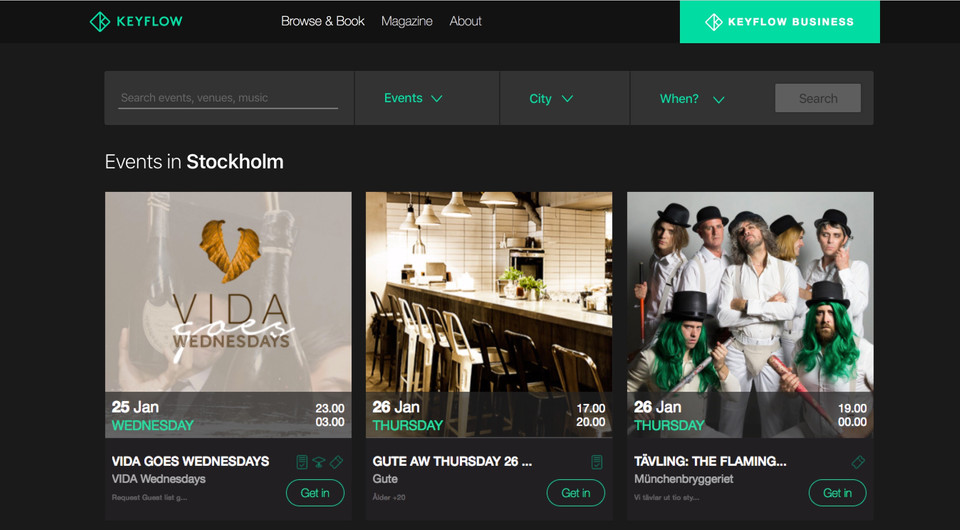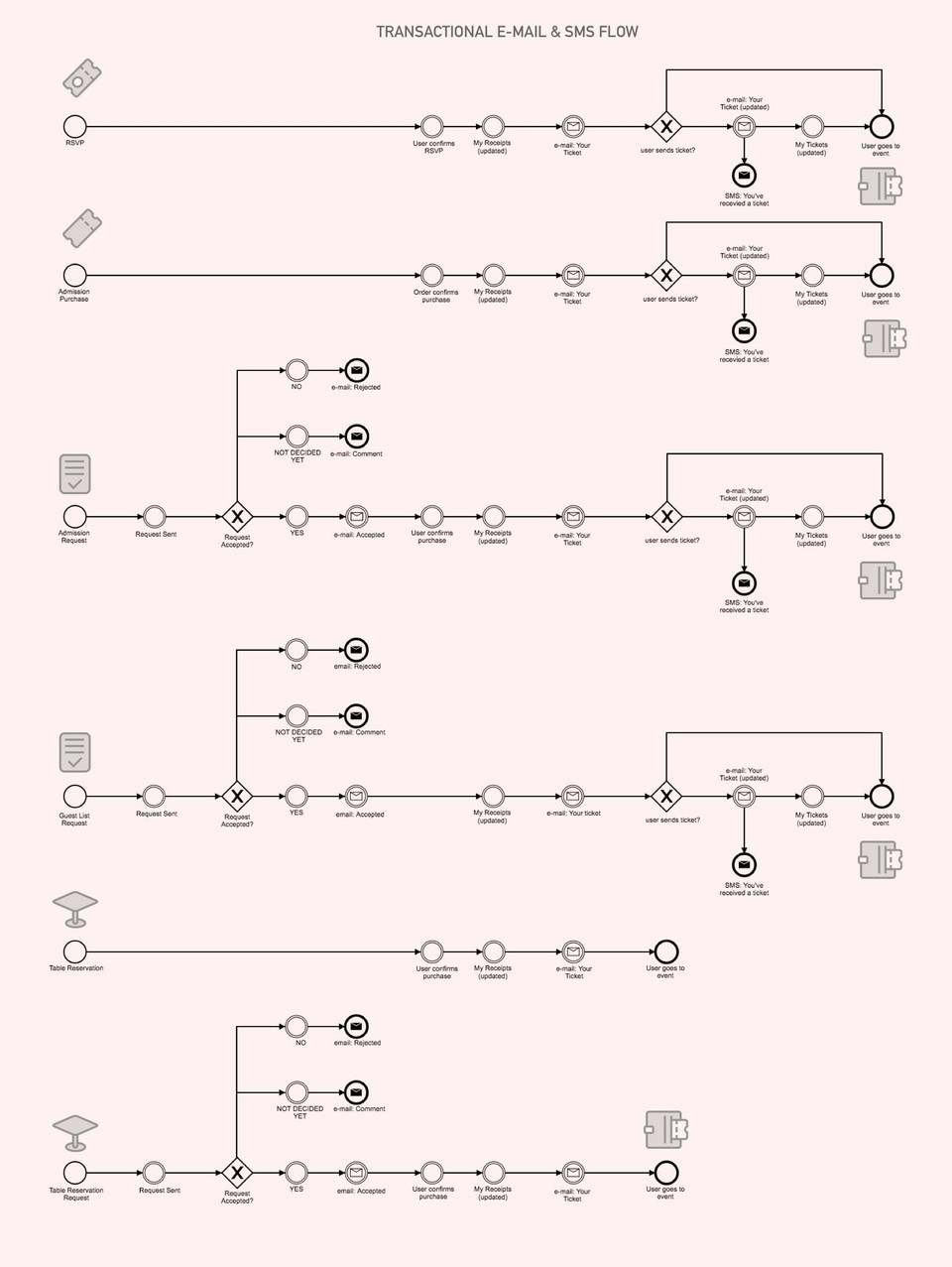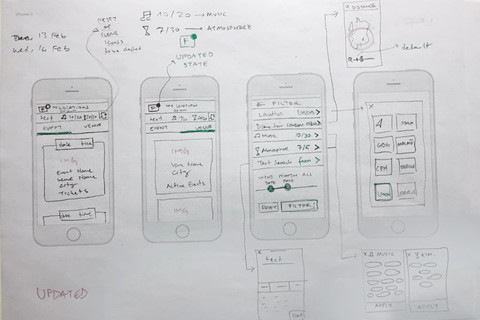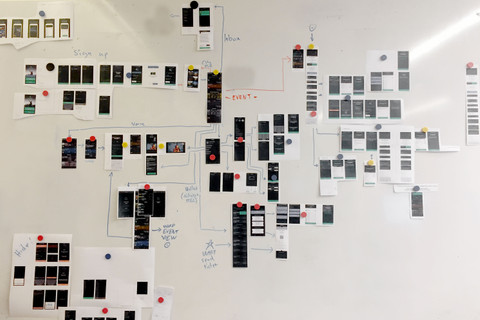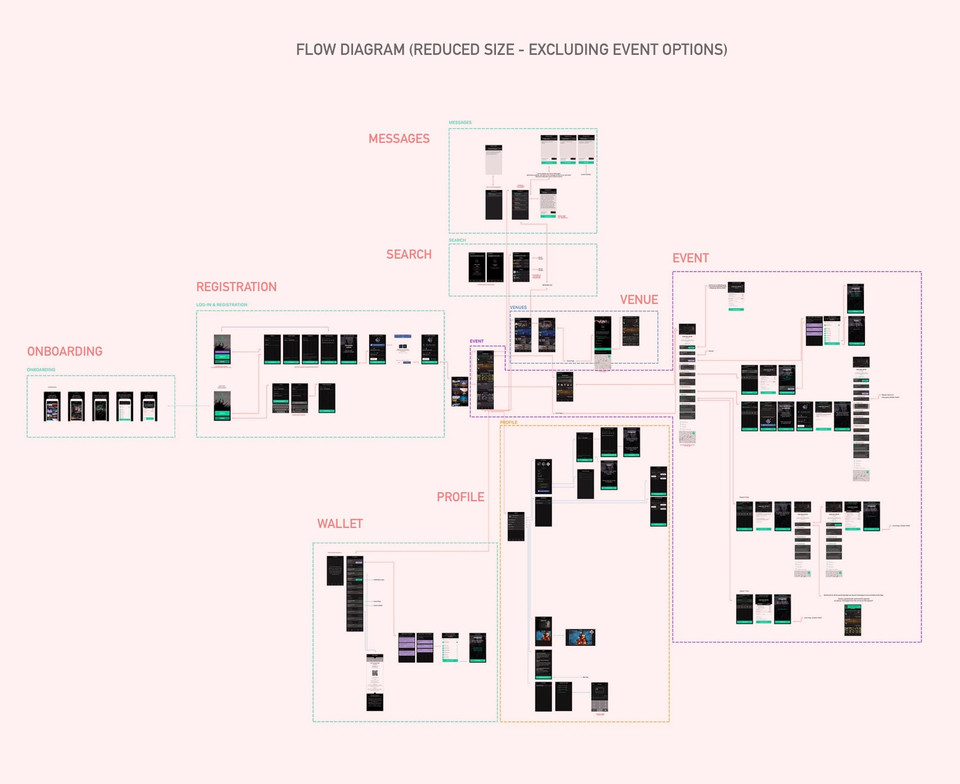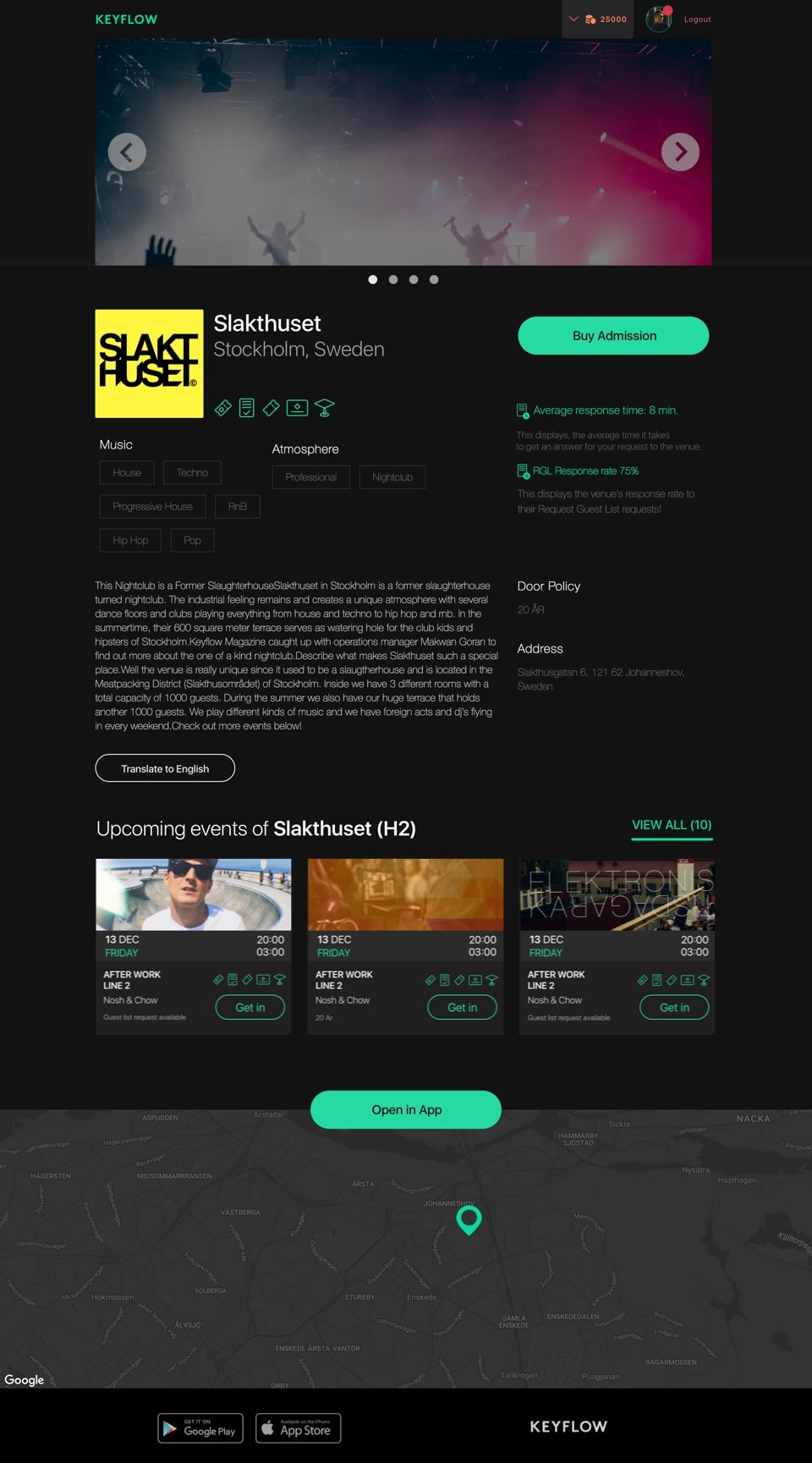Platform:
iOS/Android & Web Duration:
2015/5 – 2018/8 Role:
Product Designer (B2C)Method:
Agile + Lean UXIntroduction
Digitalisation of Nightlife in the Social Media Age
Nightlife is seriously fun and having access to it can sometimes be challenging. Every guest seeks to have the access to a unique experience. Keyflow was inspired by solving the complicated problems of nightlife, aiming to make the nightlife accessible and transparent. Guests and venues have specific requirements and finding the right fit makes the night fun for everyone. Keyflow Team includes night-life professionals who has access to a focus-group of venues and night-life guests. The solutions come with an integrated 2-layered nightlife ecosystem:
The Problem
Accessing a venue or having in depth information on what is on in the town can be too complicated for guests. It takes several trial & errors, long timespans waiting at the queue. Booking a table with friends, connecting to a promoter or noticing the venue as a VIP guest need quick solutions. There are various obstacles against every type of nightlife guest:
The Solution: Keyflow
Keyflow helps guests discover, get and share friction-free access to a wide-range of nightclubs. Guests have the power to pre-manage the night out without any surprises. Guests can request to be on the list, have digital VIP cards, pre-order table service, skip the queue and get admission for their friends. Keyflow also provides a discovery platform for nightlife guests. Keyflow's benefits for the guests are:
The Process
Research: Contextual Analysis, Surveys (guests & venues), Periodic Interviews (venue staff), Focus groups (e.g. Creatives, VIP guests), Data Analytics
Ideas: Mind Map, Empathy Map, User Journey Map, Personas
Design: Storyboarding, Design for Accessibility & Localisation, Heuristic Evaluation, Sketching, Wireframing & Zeplin, Documentation (Confluence)
Prototype: High Fidelity Prototype, Working Prototype (Staging)
Test-Evaluate: User Testing (individual & groups), Experience Sampling, Field (Feature) Testing, Functional Testing, Testing & Bug Reporting (JIRA)
Research: Seeing beyond the queue
Thrill of the night might fade out during long queues. Several focus groups were tested in ortder to undertand the needs of nightlife guests. A group of creatives were invited to the workshops to understand the needs of the guests and the venues. VIP-Guests answered surveys about VIP-Card privileges, sharing privileges with friends and requesting admission from venues. Keyflow has also organised private-events (e.g. Absolut Nights, Marshall Headphones) to connect with nightclub owners in Sweden - another platform to test new features and collect user-feedback. Decision and schedule of features have been based on these research insights, as well as data gathered using analytics from Apps & web platform.
Ideas: From pre-party to 'story-to-tell'
To have a deeper understanding of the journey of guests, we worked along personas of young-creatives, VIP guests and built empathy & user-journey maps. The ideation process has helped us define a smart way of defining events and admission types. Building a framework of a new iconography and creating tags for atmosphere & music preferences. Tags would help defining venue atmosphere and match guest preferences to provide a better discovery experience.
Transparency has been the focal-point to find the matching experience. The idea behind 'Guest list request' feature, was to remove the gap between guests and the venues before the night. Even though, loyalty is already being tracked and rewarded by Keyflow, guests need earlier answers before starting to wait in the queue. Admission types and ticketing options were developed, and request feature has been iteratively improving since the introduction. Layers of business-logic, transactional communication, functional dependencies were also considered at the end of every ideation session.
Designing Keyflow App & Web
My role in the team, as the only product designer, required collaboration with several stakeholders including members from sales-marketing team, project management and 8+ developers (native mobile & web). Keyflow has been a scalable and multi-lingual product from its earlier steps. The earliest visual-iterations have been about improving core-functional requirements about multi-platform and multi-lingual support of the products. Building a design system, started with a sketch component-library, continued with Confluence documentation and workshops with developers.
Design details of new features were presented to relevant stakeholders before each sprint, periodically. This helped creating a sprint-based workflow and delivery of assets on Zeplin. The component-libraries, guidelines, app-store images and onboarding assets were also updated during each sprint. Scheduled presentations and workshops with other stakeholders helped to prevent bugs, creating better data-collection points in the product and keep visual and functional consistency.
Test - Evaluate
Testing of new-releases at Keyflow started with internal-testing on the staging environment where edge-cases were continuously created, and early bugs were reported. Further field-tests took place in person during office-hours and nightlife events. Major features such as RSVP or QR-code tickets required field-testing in event conditions, where a doorman, an event manager and number of guests were required. Keyflow team had the chance to collaborate with brands like Absolut, Marshall, Peroni and Universal Studios in order to host nightlife professionals where feature-tests were held to gain meaningful insights and user-feedbacks from professionals. Handling of invitations, listing of events and intrusiveness of advertisements were prototyped in Principle App for micro-interactions.
Conclusions
Keyflow is currently the main nightlife platform of Scandinavia with a growing number of users who discover nightlife events and venues through the platform. As an integrated nightlife solution, the product has branched out to provide unique solutions to the needs of various types of guests. Team's understanding of the ecosystem has increased as the product and user-base has grown. Request feature has been the most significant disruption in the industry and its development did not follow a straight-line. Introduction of Keyflow Coins was based on surveys and user-interviews to help venues engage more with guest list requests. Coins were expected to add value to the requests, save time for venues and help to gather user information and reward mechanism. Even though introduction of Coins has increased request-engagement on both sides (guests & venues), it proved to have room for improvement to reach a wider-audience. Keyflow has come up with a newer and more transparent approach to increase request engagement by making changes on Keyflow Business (venue response rate). Nightlife dynamics show a large variety globally, and Keyflow has the following challenges:


